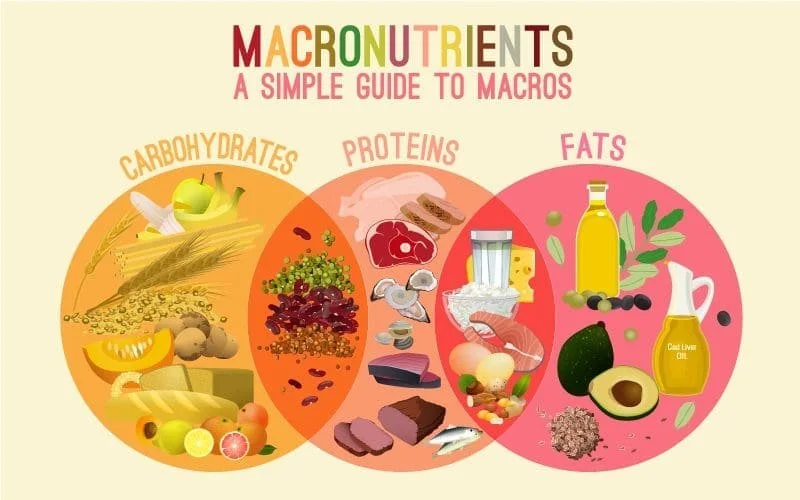Optimizing Performance Through Diet
Introduction:
Every day, athletes push themselves to their limits as they strive to become the best versions of themselves. At first glance, athletes appear to only train for hours on end to improve their physical capabilities, but what happens behind the scenes of their daily lives? Many underlying aspects impact an athlete's performance, such as diet, mental state, and environmental factors. Specifically, proper nutrition is crucial as it contributes to an athlete’s performance in workouts and their recovery. As such, nutrition and diet can have a major impact on their performance.
Essential Macronutrients for Optimal Performance:
Carbohydrates: Carbohydrates provide energy for the body and can be obtained in various foods such as grains, fruits, and vegetables. For athletes, carbohydrates are extremely important for reaching and maintaining high energy levels during training and competition. Understanding the functionality and types of carbohydrates can help an athlete augment performance and conserve large amounts of energy for potential benefits.
Proteins: Proteins play a crucial role in muscle development and growth within the human body. Essential amino acids can be found in many foods such as seafood, meat, poultry, eggs, beans, etc. Proteins have proven to be most useful during post-exercise periods with their ability to provide necessary macromolecules to repair muscle tissues.
Healthy Fats: Although fats have both positive and negative effects, healthy fats are extremely important for the human body. Healthy fats can be obtained through foods such as avocados, nuts, and seeds. Studies have displayed that healthy fats assist in energy production and nutrient absorption. Eating a reasonable amount of healthy fats can provide benefits without sacrificing performance.
Micronutrients & Their Role In Enhancing Performance
Vitamins and Minerals: Beyond macronutrients, micronutrients also play a crucial role in maintaining peak athletic performance. One example of a vital micronutrient is iron which assists oxygen transport; meats, poultry, and seafood are the richest sources of iron. Another essential micronutrient is calcium and its responsibility is to maintain bone health and muscle function; it is most abundant in seeds, cheese, and yogurt. Last but not least is magnesium. essential for both energy production and muscle function, magnesium is prominently found in foods such as pumpkin seeds, almonds, and spinach.
Antioxidants and Recovery: Antioxidants are compounds that inhibit oxidation, a process that occurs when atoms or groups of atoms lose electrons, thereby reducing inflammation and boosting recovery rates. They are most commonly found in foods such as berries, tomatoes, spinach, and kale. An athlete’s recovery process and overall well-being can be significantly improved by incorporating a variety of antioxidants into their diet.
Shaping Diets to Accommodate Different Factors:
Training Specificity and Nutritional Adaptations: Different sports come with different training patterns and requirements in various fields. With this in mind, athletes can use these factors to manufacture a diet that best suits their physical activity patterns and interests. For example, athletes participating in events that are based on endurance may center their diets around carbohydrates to maintain energy over long periods. Conversely, athletes participating in strength-oriented sports will focus on protein intake for faster muscle recovery following intense workouts.
Periodization for Optimal Performance: Having some sort of correlation between training patterns and dietary tendencies is extremely important to stay healthy. The pre-competition period includes maximizing energy intake through forms such as carbohydrates and focusing on performance during key events leading up to the actual competition. On the other hand, an off-season diet for athletes will likely include a variety of foods, but should still emphasize a balanced nutrient intake. Using a periodization method on a year-long basis allows athletes to focus their diets on foods that best suit their requirements at specific moments based on physical activities and schedules.
Managing External Influences Through Strategic Planning: One of the hardest aspects of maintaining a healthy diet, especially for athletes, is the external factors that occur outside of sports. An example of some of these external events include family time, traveling, and other social commitments. During these periods, planning is essential for dietary success. Some examples of things to plan include choosing healthy snacks and healthy options at restaurants. Not addressing nutrition during time away from sports can lead to a serious drop in performance.
Conclusion:
Creating a year-long, consistent diet is no easy task, especially in the case of athletes and those who engage in any sort of physical activity. Many factors and thoughts go into establishing such a diet. Consistency and discipline lie at the heart of all these causes and is essential for staying healthy. Knowing the ins and outs of each food and the elements it is composed of plays a major role in accurately comprehending which foods are appropriate to intake at which times. Be sure to consult a medical professional before starting any new diets.
Works Cited:
American Heart Association. "Healthy Eating." American Heart Association, https://www.heart.org/en/healthy-living/healthy-eating.
National Institutes of Health. "Dietary Guidelines for Americans." National Institutes of Health, https://www.niddk.nih.gov/health-information/weight-management/dietary-guidelines-nutrition.
Mayo Clinic. "Nutrition and Healthy Eating." Mayo Clinic, https://www.mayoclinic.org/healthy-lifestyle/nutrition-and-healthy-eating.
Harvard T.H. Chan School of Public Health. "The Nutrition Source." Harvard T.H. Chan School of Public Health, https://www.hsph.harvard.edu/nutritionsource/.
Academy of Nutrition and Dietetics. "Eat Right." Academy of Nutrition and Dietetics, https://www.eatright.org/.
World Health Organization. "Nutrition." World Health Organization, https://www.who.int/health-topics/nutrition.



